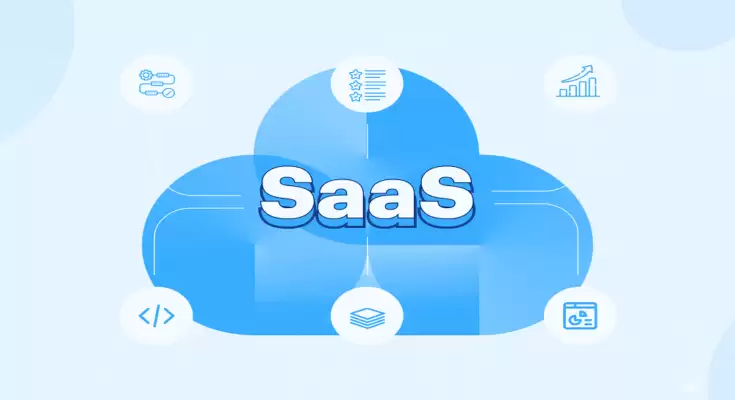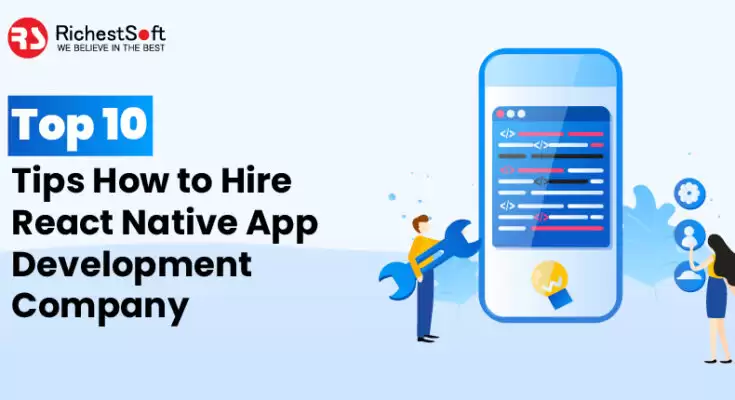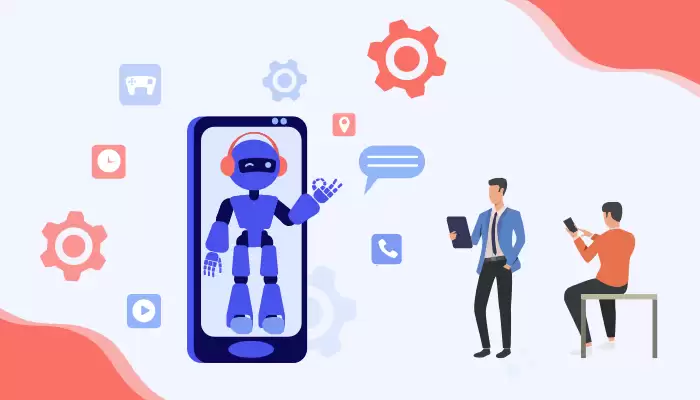The software-as-a-service (SaaS) model has skyrocketed in popularity in the last few years as it offers breath-taking solutions among diverse industries. As the competition is so fierce among SaaS solutions, so are customers’ growing expectations.
To gain an advantage over competitors, many companies have begun to adopt various cutting-edge technologies, ranging across AI and low-code technology and more. SaaS solutions are becoming an increasingly viable choice for organizations looking for greater accessibility, functionality, and versatility in a smooth business environment.
Gartner forecasts that the expenditure on cloud-based services for public use is projected to grow by 20.7 percent to a total of $591.8 billion in 2023, a rate in growth that will influence SaaS trends over the next year.
This blog concerns the latest SaaS trends, market size and future growth.
Key Facts About SaaS
- AI is rapidly being made a feature of numerous SaaS platforms and is set to continue working to enhance SaaS features, such as personalization, automation, and security.
- Machine learning will be an integral component in any AI-powered SaaS and is expected to evolve into MLaaS as companies seek better control of their learning and training model.
- Vertical SaaS will expand because businesses with specific, industry-specific requirements require features to meet their needs.
- Vertical SaaS businesses have experienced substantial growth in the past few years because of the transition from on-premise solutions towards cloud-based computing.
- The development with no code and low-code market will continue to grow as more businesses shift to cloud-based technology and online-first processes.
- The most prominent MarTech features include marketing automation, distribution of emails and CRM.
Advantages Of SaaS solutions
Software as a Service (SaaS) is a delivery model for software applications where the vendor hosts the Software and makes it available to customers over the internet. SaaS allows customers to access and use software applications through a web browser, eliminating the need for software installations, maintenance, and upgrades. Since the market for SaaS app development services is in high demand, you can reach out to a good development company for your app. Here listed some of the advantages of SaaS applications are:
- Accessibility: SaaS applications can be accessed from any device with an internet connection, enabling customers to work from anywhere at any time.
- Scalability: SaaS solutions are designed to be scalable, allowing customers to increase or decrease their usage as their needs change easily.
- Cost-effective: SaaS solutions are typically sold on a subscription basis, eliminating the need for large upfront investments in software licenses and hardware.
- Automatic Updates: SaaS vendors take care of all software updates and upgrades, ensuring that customers always have access to the latest software version.
- Integration: SaaS applications often offer integration with other software tools and systems, enabling customers to connect their existing systems easily with new solutions.
- Security: SaaS vendors typically invest heavily in security, providing customers with access to robust security features, such as data encryption, multi-factor authentication, and automatic backups.
- Customization: Many SaaS solutions offer customization options, allowing customers to tailor the Software to their specific needs.
SaaS trends 2023
Artificial Intelligence
Artificial Intelligence (AI) has become a key trend in the Software as a Service (SaaS) market and is expected to grow in the coming years. Here are some use cases of AI SaaS to watch out for:
1. AI-powered Customer Service: AI is being used to improve the customer service experience with SaaS solutions that provide chatbots and virtual assistants that can answer customer questions in real time.
2. Predictive Analytics: SaaS solutions that use AI to analyze data and predict future trends are becoming increasingly popular. This trend is helping organizations make more informed decisions and improve their bottom line.
3. Intelligent Workflow Automation: SaaS solutions that use AI to automate workflows are becoming increasingly popular. This trend is helping organizations save time and resources while improving efficiency and productivity. You can hire dedicated developers India and ensure flexibility based on project requirements.
4. AI-powered Supply Chain Management: SaaS solutions that optimize the supply chain are becoming increasingly popular. This trend is helping organizations reduce costs, improve delivery times, and increase efficiency.
Machine Learning
Machine Learning (ML) is an increasingly popular technology within the Software as a Service (SaaS) market. SaaS solutions that automate the process of building, training, and deploying machine learning models are becoming increasingly popular. This trend makes ML accessible to organizations of all sizes and expertise levels. Here are some use cases that ML SaaS trends to watch out for:
- ML-powered Predictive Maintenance: SaaS solutions that use ML to predict when equipment is likely to fail and schedule maintenance accordingly are becoming increasingly popular. This trend is helping organizations reduce downtime, improve efficiency, and increase safety.
- ML-powered Personalization: SaaS solutions that use ML to provide personalized experiences to users. Such as recommendations and customized content, are becoming increasingly popular. This trend is helping organizations improve the user experience and increase engagement.
- ML-powered Image and Video Processing: SaaS solutions that use ML to analyze images and videos are becoming increasingly popular. This trend is helping organizations extract insights from visual data and improve their decision-making processes.
- ML-powered Healthcare: SaaS solutions that use ML to improve healthcare outcomes. Such as predicting disease outbreaks and improving patient outcomes, are becoming increasingly popular. This trend is helping organizations improve the overall quality of care and reduce costs.
Low-code Apps
Low-code platforms typically have drag-and-drop interfaces that enable users to create applications using pre-built templates and modules rather than writing custom code from scratch. This makes it easier for non-technical users. Such as business analysts or subject matter experts, to create and launch applications, freeing IT teams to focus on more complex projects.
Low-code apps in the SaaS industry have a wide range of use cases, including:
- Process Automation: Low-code platforms can automate manual and repetitive business processes such as invoicing, expense management, and HR tasks.
- IT Workflow Automation: IT departments can use low-code platforms to automate various internal IT processes. Such as incident management, service request management, and change management.
- Mobile App Development: Low-code platforms can be used to build and deploy mobile applications, enabling organizations to create custom apps that run on iOS, Android, and other platforms.
- Analytics and Dashboards: Low-code platforms can be used to build custom analytics dashboards to help organizations better understand their data and make informed decisions.
- Workforce Management: Low-code platforms can be used to automate and manage various aspects of the workforce, such as employee scheduling, time and attendance tracking, and performance management.
Mobile first-SaaS
“Mobile first” is a trend in the software-as-a-service (SaaS) industry driven by the increasing popularity of smartphones and other mobile devices. As well as the growing number of users who prefer to access information and complete tasks on the go.
SaaS companies are recognizing the importance of offering mobile experiences that are fast, responsive, and easy to use. Mobile-first SaaS also has the potential to drive business growth and increase user engagement. For example, businesses can use mobile apps to connect with customers. Offer new products and services, and collect data on user behavior.
Mobile-first SaaS application development requires a deep understanding of user requirements and the ability to build and deploy high-quality applications quickly and at scale. It includes benefits like increased user engagement, improved customer satisfaction, and higher conversion rates.
Mobile SaaS applications help businesses-
- manage customer interactions, sales, and support activities.
- teams manage tasks, deadlines, and team collaboration.
- manage their finances, such as tracking expenses, creating invoices, and managing budgets.
- manage their employees by tracking time off, managing benefits, and recruiting new hires.
- manage their supply chain operations, such as tracking inventory and managing suppliers.
- automate and streamline their marketing processes, such as email marketing, social media management, and lead generation.
Vertical SaaS
Vertical SaaS solutions are designed to address the specific needs of a particular industry, such as healthcare, finance, retail, or education. These solutions offer pre-built features and functionality tailored to the industry. Which can help companies save time and resources compared to developing their custom solutions.
Companies are looking for solutions that can help them provide better customer experiences and increase customer satisfaction. Vertical SaaS solutions are designed to meet the unique needs of each industry and can help companies deliver more personalized experiences to their customers. It helps companies automate manual processes and streamline workflows, which can lead to improved efficiency and increased productivity.
Vertical SaaS solutions are cloud-based and can be deployed quickly and easily without significant IT resources or infrastructure. Moreover, it often includes built-in security features to protect sensitive data and meet industry regulations. Which can give companies peace of mind and reduce the risk of data breaches.
Future Of SaaS
The future of Software as a Service (SaaS) is expected to be bright, with a significant increase in demand for cloud-based solutions. The global SaaS market size is expected to grow significantly over the coming years. Driven by the increasing adoption of cloud technology, the growth of the SME sector, and the need for cost-effective and scalable solutions. You can hire app developer in India to develop and exclusive SaaS app for your business.
According to a recent market research report, the global SaaS market size was valued at USD 92.75 billion in 2020. And is expected to reach USD 223.47 billion by 2025, growing at a CAGR of 18.8% during the forecast period.
SaaS business revenue is expected to reach around $716.52 billion by 2028, increasing at a compound annual growth rate (CAGR) of 27.5% from 2021.
The growing demand for mobile-based solutions and the increasing number of mobile devices is expected to drive the growth of the SaaS market in the coming years.
Currently, the estimated value of the SaaS industry is 146 billion U.S. dollars, and it’s estimated to reach 195 billion U.S. dollars by 2023.
By 2026, the MLaaS market is forecast to grow to $12.6 billion. Which is a CAGR of 38% over the next few years.
Concluding Lines
The future of SaaS (Software-as-a-Service) looks bright as more and more companies adopt cloud-based solutions to meet their business needs. As the SaaS market continues to grow and mature, we expect continued innovation and advancements in SaaS technologies and solutions. You can partner with a top-rated SaaS app development company for your next project.
Businesses of all sizes can profit from using SaaS applications in 2030 and onwards. The small investments you make across the company for external and internal operations will yield healthy profits.








